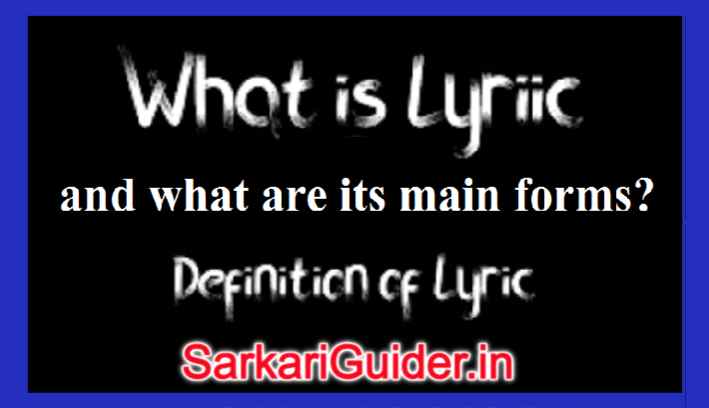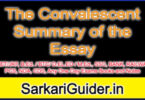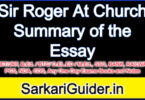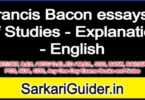What is a lyric and what are its main forms?

What is a lyric and what are its main forms?
What is a lyric and what are its main forms? – The word lyric is derived from the world lyre. It is a musical instrument. The poems which could be sung to a lyre were known as lyrics in Greek poetry. A lyric is a short poem expressing the poet’s personal moods or thoughts and feelings in a musical way. Apart from it association with music the lyric in the 19th century came to be thought of as a brief expression of intense feeling. Another feature of the lyric is spontaneity. It is a sponing. It is a spontaneous overflow of powerful feelings bringing with it its own form.
Some of its characteristics are :
(i) It is brief and personal
(ii) It embodies intense feeling.
(iii) It is spontaneous in its origin and composition. It is unpremeditated and full-throated cry of the poet’s heart and soul.
(iv ) It’s form may be conventional, like the sonnet or the ode, but it very often brings its own form with it. The form may be irregular and may dictated by the type of emotion of joy or sorrow subdued contemplation or hilarious gaiety which is the source of the inspiration.
(v) Whatever the form of the poem, it is always musical.
(vi) it may be a short or long according to the nature of the impulse and inspiration and the theme.
Important forms of lyric
Some of the important forms of lyric poetry are :
(i) The Sonnet; (ii) The Ode; and (iii) The Elegy.
The Sonnet –
It is Italian in origin. It was first used and perfected by the Italian poet Petrarch. The most famous pattern of the sonnet is called the ‘Petrarchan sonnet. It is a short poem of fourteenlines. It divided itself naturally into two parts: the octave consisting of the first eight lines, and the seste considering of the remaining six lines. The rhyme scheme of the Octave is ab ba, ab ba. The most usual is cde, cde.
The English sonnet –
The sonnet was brought to England by Thomas Wyatt and Henry Howard, Earl of Surrey. Their sonnets were first published in Totte l’s Miscellany in 1559. The first important sonnet sequence was Sir Phillip Sidney’s Astrophil and Stella. It was a poem of a single stanza of fourteen lines including a couplet. Their important English sonneteers are Daniel, Drayton, Spenser and Shakespeare. The English Sonnet is also called the Shakespearean sonnet. It is because of the greatness of Shakespeare as a dramatist and poet and the beauty and sweetness of sonnets. The sonnet form was used by Donne, Milton, Wordsworth and other with great skill.
The structure of the English sonnet –
The English sonnet consists of three stanzas of four lines followed by a couplet. The insufficiency of rhyming words in English let to the geater number of rhymes in the English sonnet. The rhyme scheme introduced by Spenser is : ab, ab; bc; bc; cd, cd : e e. The usual rhyme scheme of Shakespeare’s sonnets is : ab, ba; cd ed; ef ef; g g. The English sonnet is much less complex than the Petrarchan sonnet. In the Italian sonnet there is a turn of thought or emotion after the octave. In the English the 3 quatrains carry on the same emotion with a sudden turn in the concluding couplet. The concluding couplet which is the distinguishing feature of the English sonnet. It is also sometimes its weakness. The last two lines sometimes do not seem to follow, naturally from the preceding 12 lines they seem to be attached to be without much logical connection.
The Ode –
The Ode is a poem of Greek origin. Pidar is the great master of the Ode. In Greek literature it is an elaborate lyrical poem like the ordinary lyric it was accompanied by musical instruments. It was divided into three parts (i) strophe (ii) antistrophe, and (iii) epode. Pidar used very elaborate patterns. Pidar wrote mostly on athletic subjects. Roman poet Horrace is also famous for his odes. But his odes are not choral odes. They are serious in tone, and moral and patriotic in content. Pidar’s odes is known as ‘greater ode and Horace’s ode is known as the ‘lesser ode’.
In England both types of odes were imitated, Spenser’s Epithalamion
is resembles Greek form. Gray’s odes are closer to Pindar. Cowley’s are freer version of Pindar’s form. Andrew Marwell splendidly imitated the Horatian form in his Ode upon Cormweli’s return from Ireland. The odes of Wordsworth, Shelley and Keats do not strictly conform to the traditional pattern. They have majesty of theme and seriousness and sublimity of tone.
Oxford English Dictionary defines the odes as a rhymed really unrhymed lyric, often in the form of an address, generally dignified and exalted in subject, feeling and style. Edmund Gosse defines it as a poem of enthusiastic strain directed to a fixed purpose and dealing with a dignified theme. The term ode is now used for any serious lyrical poem of address to a virtue, person or thing. Shelley’s Ode to the West Wind; Keat’s Ode to Autumn, Wordsworth’s Ode to duty are some of the examples.
The chief characteristics of the Ode are :
(i) The theme is exalted, dignified and solemn.
(ii) The language is suited to the theme – solemn and grand, exalted in tone.
(iii) There is usually a logical development of the thought.
(iv) It is in the form of an address.
(v) It’s structure may be regular like Shelley’s Ode to The Westwind or Keats’s Ode to Autumn or it may irregular as Wordsworth’s Ode on the Intimations and Immortality.
The Elegy –
An elegy is a sad and mournful poem. It celebrates the death of a person near and dear to the poet. It is a poetic lament for one who had died. It is a grave and reflective poem. In ancient Greek and Latin literature elegy was a poem written in a particular metre, and had no connection with death or mourning. Ovid used it for love poetry. English poet Donne followed Ovid and wrote a series of elegies an amorous theme. But most English elegies follow the narrower definitions given above. An elegy is based on real personally felt grief and bereavement. Absolute sincerity of feeling and expression is the hallmark of an elegy. Mathew Amold’s ‘Rugby Chapel’ expresses the personal grief of the poet on the death of his father Dr. Arnold the famous headmaster of Rugby Chapel. It may also be an expression of the feeling of grief at the plight of a whole race or community as a whole. Gray’s famous ‘Elegy Written in the Country Churchyard’ mourns the death of the simple innocent village folk whose talents could not find full fruition. It celebrates the death of those who died ‘unwest unhonoured and unsung.’
The Pastoral elegy –
An important kind of elegy is known as pastoral elegy. It celebrates the death of a friend or an important person who may not be an intimate friend of the poet. It is modelled on the Greek elegy of 3rd century B.C. called ‘The lament of Moschus for Bion’: In English Milton’s Lycidas, Shelley’s Adonals and Arnold’s Thyrsis are pastoral elegies.
Dramatic monologue –
There is another important form of poetry which does not come strictly under the two broad categories – subjective or personal, and objective or impersonal into which it had been classified. It is both personal and impersonal at the same time. It is called dramatic lyric or dramatic monologue. It was suggested by ‘Soliloquy’ of the drama.
It is dramatic in manner and lyrical in spirit content. It expresses the thoughts and feelings or reflections of a person at some critical juncture in his life. It is a character-study. It is not so much narrative as reflective or argumentative. The poet impersonates another character. The poem puts his own thoughts and attitudes towards life through that imagined or real character. Robert Browning is the most famous poet who wrote dramatic monologues. Some of the famous examples of dramatic monologues from these two poets are : Browning’s Procepice, Rabbi Ben Ezra : My last Duchess; and the Last Ride Together; Tennyson’s Ulysses.
Important links
What is poetry? What are its main characteristics?






